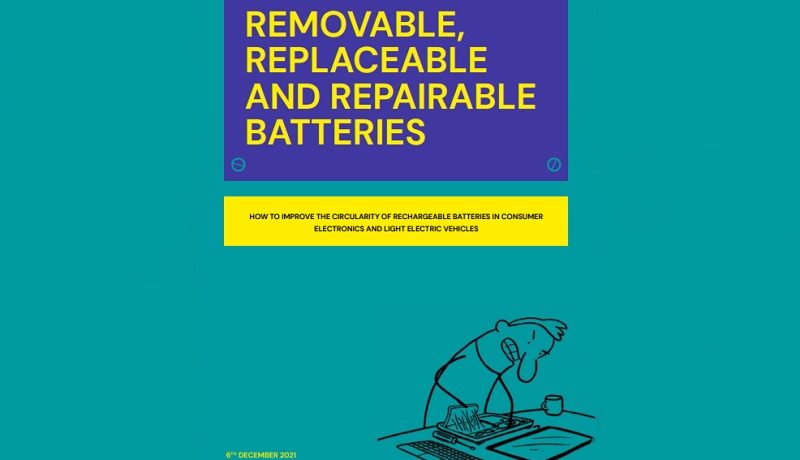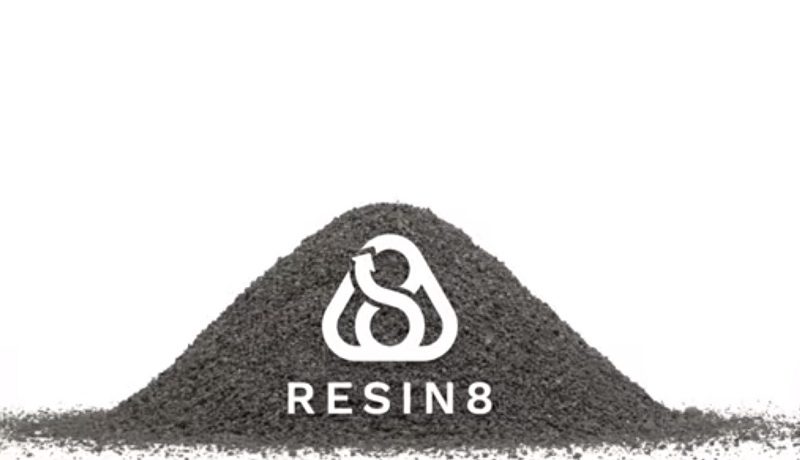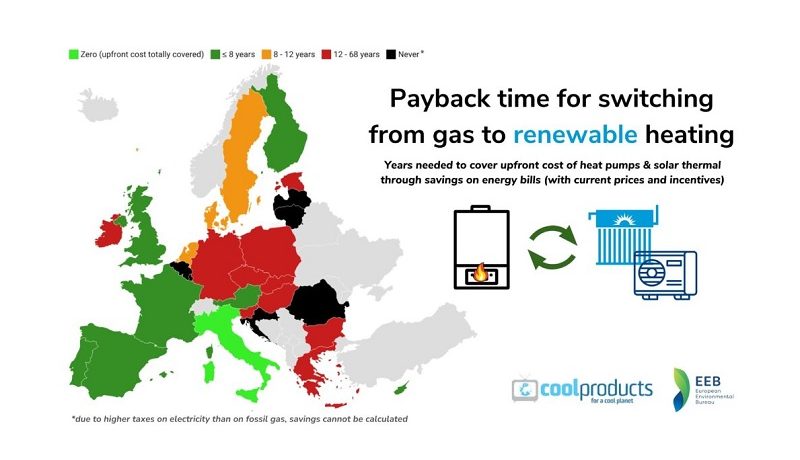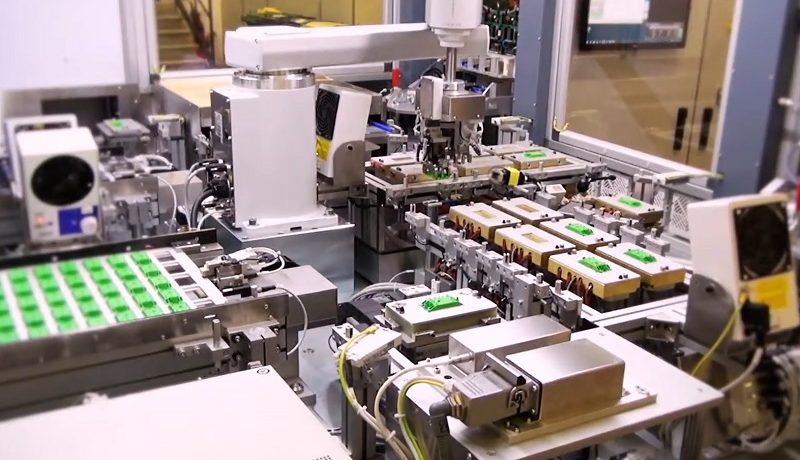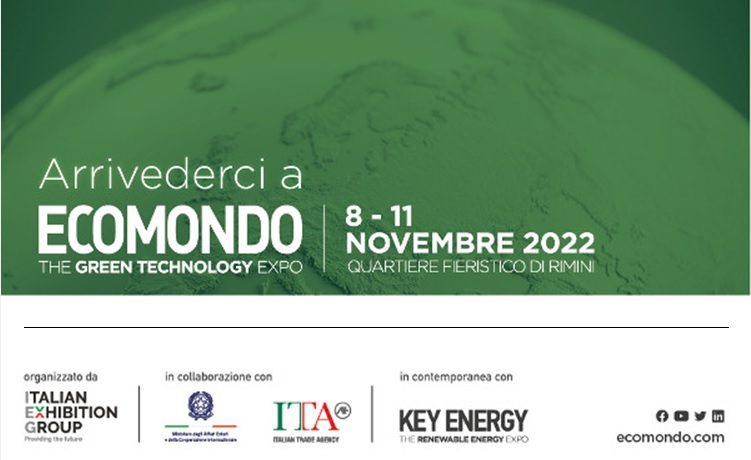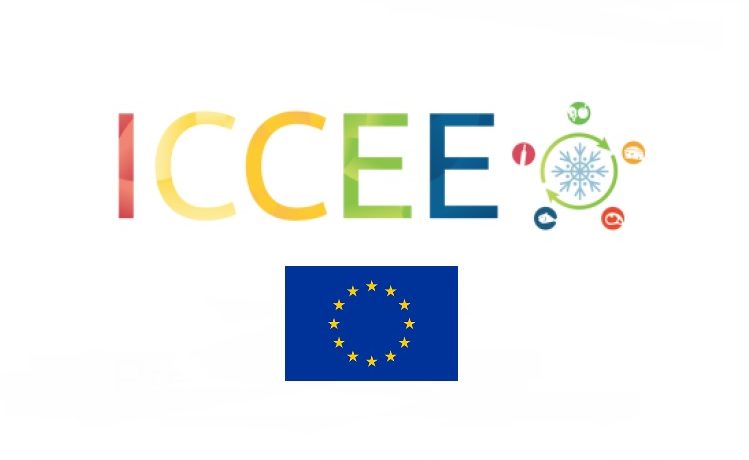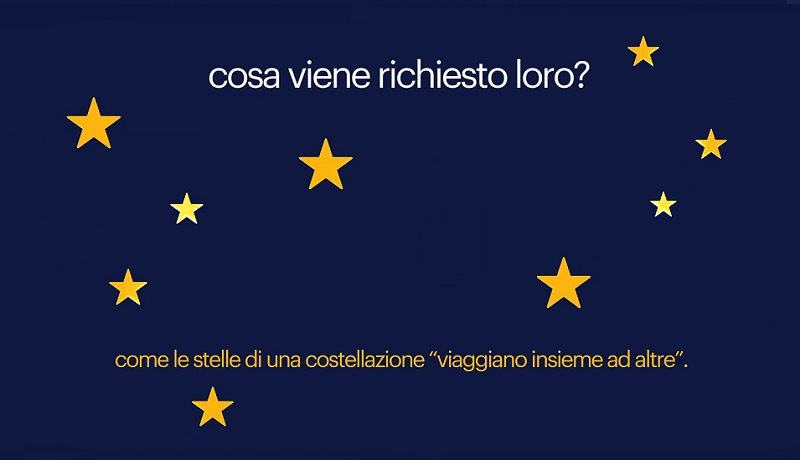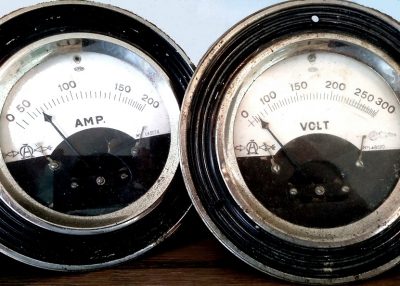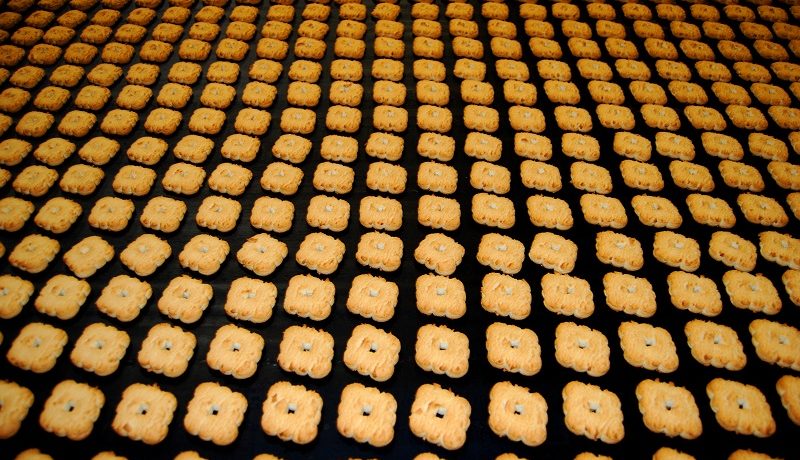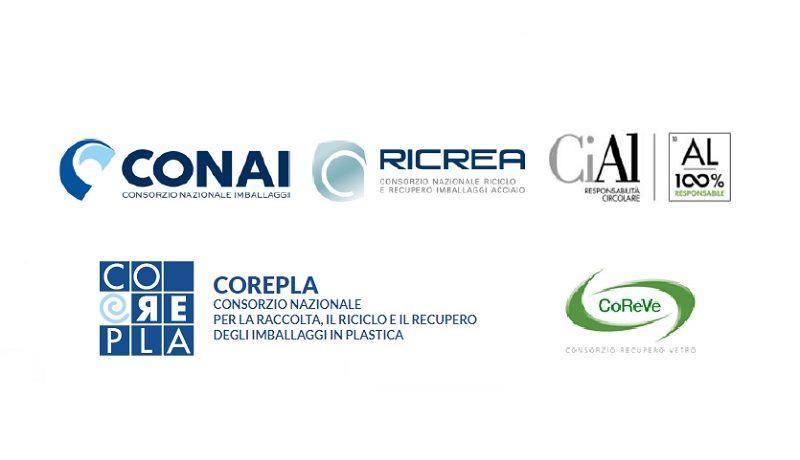Category: Tecnologie
Non-replaceable batteries are bad news for the environment and consumers, new research finds. In the growing market for rechargeable electronics, a growing number of devices contain non-replaceable or non-repairable lithium ion batteries.
Smartphones, laptops, headphones and e-bikes are amongst the products affected by early failure due to poor battery design. Close to 100% of tablet and smartphone batteries are glued in place.
At a time where Europe claims to be a leader on climate and sustainability, most rechargeable batteries in consumer electronics and e-bikes or scooters are either non-replaceable or non-repairable, resulting in shorter product lifetimes, increased electronic waste, loss of rare materials, and unnecessary expenditure for consumers.
These are some of the findings of a report released today by the European Environmental Bureau, the Right to Repair campaign and researchers at the University of Lund.
Rechargeable lithium ion batteries can be found in most of today’s devices, from smartphones, laptops and tablets to electric bikes and scooters, and estimates show that the demand will continue to grow in the next decade: up to 60% for batteries in consumer electronics and 15% for electric bikes and scooters by 2030.
Battery failure is one of the most common problems for many consumer electronics and often the first component to fail in e-bikes and scooters. 42% of smartphones and 27% of laptops repairs are related to battery replacement.
Yet, between inaccessible design, the use of adhesives, software locks, lack of replacement parts, tools and repair information, many batteries are destined never to be replaced, repaired or recycled.
Chloé Mikolajczak, campaigner at the Right to Repair, said: “This is extremely worrying as the average battery life for these products is around 3 years and the majority of repairers we talked to said that the risk of damaging a device while removing the battery has increased. This suggests that a significant number of devices are being prematurely discarded due to battery failure.”
Meanwhile, ensuring that all new phones and tablets sold in the EU in 2030 have easily removable and replaceable batteries could cut the annual emissions of these devices by 30% compared to business as usual, reduce the loss of critical raw materials like cobalt and indium, and save European consumers €19.8 billion.
On top of the report, a coalition of electronic and battery repairers, the recycling industry and environmental NGOs representing at least 500 organisations published a joint statement today calling on the European Commission to take action for more removable, replaceable and repairable batteries in the forthcoming battery regulation.
Jean-Pierre Schweitzer, Policy Officer for product policy at the EEB, said: “While there are many companies working to replace, repair and recycle batteries from electronics like smartphones and e-bikes, poor product design and software are making this increasingly challenging or impossible. Manufacturers are wasting precious resources and forcing consumers to replace devices before they need to. The European Council and Parliament now negotiating the European Batteries Regulation have the power to address all of these issues.”
The European Commission proposed a “Battery regulation” that aims to tackle the whole lifecycle of batteries from the supply chain to disposal, and is currently in the hands of the European Parliament and Council.
The proposal addresses the removability of batteries but overlooks key issues such as light electric vehicles, spare part availability, and software which prevents battery repair.
The Right to Repair European campaign is a coalition of more than 80 organisations from 18 European countries fighting for longer-lasting and more repairable products.
The European Environmental Bureau (EEB) is Europe’s largest network of environmental citizens’ organisations, standing for environmental justice, sustainable development and participatory democracy. Our experts work on climate change, biodiversity, circular economy, air, water, soil, chemical pollution, as well as policies on industry, energy, agriculture, product design and waste prevention. We are also active on overarching issues as sustainable development, good governance, participatory democracy and the rule of law in Europe and beyond.
We have over 160 members in over 35 countries.
Conversion of Hard-to-Recycle Plastic. The Alliance to End Plastic Waste, a Global non-profit Organisation, and the Center for Regenerative Design and Collaboration (CRDC Global) announced a partnership to scale up a solution to convert hard-to-recycle plastic waste into a concrete additive for building and construction applications.
Through the collaboration, CRDC will expand its footprint in North America with the development of a 14,000 square foot production plant in York, Pennsylvania.
The company will also scale up its existing production plant in Costa Rica, from small-scale commercial production to a full-scale commercial capacity of 90 tons per day when fully operational by mid-2022.
Combined, the two facilities will be able to process up to 24,000 metric tons of plastic waste per year. They will accept all types of mixed plastic waste that would otherwise be sent to landfill or be incinerated—to produce concrete additive, RESIN8. It is suitable for numerous applications including concrete blocks and pavers, pre-cast concrete and poured-in-place concrete. The resultant material is up to 15% lighter or stronger depending on its usage, with up to 20% better insulation properties than traditional concrete. It has already been used by Habitat for Humanity to build housing in Latin America.
“CRDC Global is proud to partner with the Alliance to End Plastic Waste to put circularity to work by scaling up the production of RESIN8, a product that has a positive impact on both the plastics and the construction industries,” said Donald Thomson, Chairman & Founder of CRDC Global. “RESIN8 was designed by and for the construction industry as a functional step towards net-zero. We spent years on research and development to ensure we have a process that can be rapidly scaled to help resolve the waste plastic dilemma.”
“The Alliance is on a mission to end plastic waste in the environment—which means finding viable solutions to advance a circular economy and ensuring their ability to scale for impact. Together with CRDC, we can help drive environmental, economic and social value for hard-to-recycle plastics,” said Jacob Duer, President and CEO of the Alliance. “We’re excited to deliver this solution to the North and Central American markets, with the aim of bringing this to a global audience.”
“We are glad to see innovative solutions like RESIN8 move forward to help improve reuse of plastic waste,” said Marc Forman, President of Georgia-Pacific Recycling, a partner of CRDC. “At Georgia- Pacific, we actively engage in continuous improvement and exploration of innovative solutions that benefit society as part of our business strategy and success measures. In this respect, we welcome the opportunity to work with this unique effort to produce building materials from mixed, hard-to-recycle plastic waste, and we’re looking forward to helping CRDC scale this initiative in the U.S.”
About the Alliance to End Plastic Waste
The Alliance to End Plastic Waste is an international non-profit organisation partnering with government, environmental and economic development NGOs and communities around the world to address the challenge to end plastic waste in the environment. Through programmes and partnerships, the Alliance focuses on solutions in four strategic areas: infrastructure, innovation, education and engagement, and clean up. As of January 2021, the Alliance has more than 50 member companies and supporters representing global companies and organisations across the plastic value chain.
Out of gas: renewable heating affordable for all in EU. The answer to soaring gas prices lies in renewable heating, a technology that is ready to replace gas boilers but only affordable in 8 EU countries. To enable consumers to overcome the upfront cost for switching to clean heating, EU governments will need to increase subsidies by €70 billion, a new Coolproducts study reveals.
The switch from gas boilers to renewable heating solutions is still out of reach for many European households.
Households willing to install renewable-sourced heating face a common problem. In general, the upfront cost of installing a heat pump is much higher than a gas boiler, but heat pumps are three times more energy efficient. After some years, the upfront cost of a new heat pump can be offset by savings on energy bills – but significant investment is needed at first.
To measure the affordability of switching to heat pumps and solar thermal, we must look at the period needed to cover their upfront cost through the savings on energy bills, which is known as the “payback time”.
With the existing incentives and prices, an average middle-income family of four members will only find a reasonable payback time (8 years or less) when switching from a fossil fuel boiler to a heat pump in Italy, Portugal, Spain, Finland, Cyprus, Malta, Austria and France.
Simply put, 19 out of 27 EU countries either don’t allocate enough subsidies for families to overcome the upfront price of renewable heating solutions or have disproportionate tax regimes on electricity. A lack of public support is hampering the uptake of heat pumps and solar thermal in Europe.
However, solving this problem would be more feasible than ever for EU governments
To make heat pumps affordable for everyone, member states must increase subsidies by at least €70 billion, an extra mile that could be reduced to €20 billion if a CO2 tax of 100 €/ton was introduced (either with the proposed dedicated ETS scheme or alternatively through the Energy Taxation Directive). Such are the estimations of the latest study carried out by the European Environmental Bureau (EEB) on behalf of the Coolproducts campaign.
– Read here the factsheet report for each EU country and the UK
– Here is the full report if you want to have a deeper reading
Green heat for all
Only about 17.3% of the heating appliances installed in European homes are powered by electricity or use clean technologies.
Time is running out to push gas out of a sector that is responsible for 12% of the EU’s total CO2 emissions, equivalent to the emissions of all the cars in the EU, and 28% of the EU’s annual energy consumption.
The non-emitting technologies, able to replace gas, oil and coal boilers, have been there for years and manufacturers have manifested on several times to be ready for the switch.
The only missing piece in this transition towards clean heating is political will. Firstly, we must ban the sale of gas boilers by 2025, which is imperative for achieving climate neutrality by 2050, as the International Energy Agency (IEA) recommended. Secondly, we need to make the switch to renewable heating affordable for all, which would require an extra effort of €70 billion in subsidies.
Fortunately, the combined effect of the national allocation of recovery and resilience plans together with revenues from carbon pricing could allow governments to cover a great part of the extra effort needed to finance the upfront cost of heat pumps.
Still, our analysis also shows that 20 out of 27 EU governments pay millions of euros in subsidies to have new gas boilers installed in our homes, despite evidence that this is slowing down the uptake of renewable heat and undermining Europe’s 2030 climate goals.
Heat pumps with low-GWP refrigerants and solar-thermal technologies have proven to be a very effective, already available solution to slash emissions, but also to protect citizens from our dependency on gas and its volatile prices. These electricity-powered devices can play a major role in reducing energy poverty as solar and wind power are now cheaper than fossil fuels and do not suffer from market-related problems.
While our analysis focuses on average-income households, additional social measures will have to be taken in order to eliminate barriers to clean heat for low-income households. The proposed Social Climate Fund of the Fit For 55, carbon pricing revenues and further energy poverty programmes must be addressed in order to make the purchase of renewable technologies feasible and the running cost compatible with everyone’s income.
Key facts and figures
– The rough cost estimate for making the replacement of all gas and oil boilers with heat pumps or solar-thermal boilers affordable for all (considering a typical investment of €10k) is €70Bn in the EU.
– This would go down to €20Bn if a CO2 tax of €100 would be in place.
– Ground source heat pumps working on the national electricity mix are the least emitting heating technologies in all member states.
– Air to water heat pumps have lower emissions than gas boilers in all member states except Poland and Estonia, due to the high share of coal in the power sectors of these two states.
– Only in 8 EU countries payback time for heat pumps is acceptable (< 8years) with existing incentives and energy prices.
– If a CO2 tax of €100 is introduced (in some form) heat pumps would have an acceptable payback time in 12 instead of 8 member states
– Southern EU countries (Cyprus, Malta, Portugal and Spain) have shorter payback times as their clean heating technology mix, air-to-air heat pumps combined with solar thermal, is less expensive than an air-to-water or a ground source heat pumps.
Davide Sabbadin, a Policy Officer at the European Environmental Bureau (EEB), said: “Households in Europe are not all equal, at least when it comes to breaking free from fossil gas. Member states and EU institutions must beef up their dedicated funds to overcome upfront costs and set a regulatory framework that eases renewables in the heating market, because carbon pricing alone cannot do the job. Not only can these policies slash emissions massively, but they can also end our dependence on gas and protect citizens from its volatile prices”
Mélissa Zill, Programme Manager for heating at ECOS, said: “The pouring of public funds into polluting technologies must stop. We must stop selling gas and oil boilers as of 2025. Governments must help everyone to make the switch, leaving no one behind. With gas prices soaring and recovery funds being allocated, EU member states stand before a unique window of opportunity.”
Coolproducts is a coalition of NGOs led by the European Environmental Bureau (EEB) and the European Environmental Citizens Organisation for Standardisation (ECOS). We campaign to ensure a better product policy for EU citizens and the environment.
The EEB is Europe’s largest network of environmental organisations with over 140 members in 30 countries. ECOS is the only European NGO focusing on environmental standards.
Recupero componenti elettronici. OSAI, la società canavesana impegnata nella Circular Economy, con lo sviluppo del progetto “Re4M” – sistema innovativo per l’estrazione e selezione dei componenti elettronici destinati al recupero dei metalli preziosi – si è presentata alla fiera Ecomondo quale nuovo partner per modelli di economia circolare.
OSAI (Ticker AIM – OSA), società attiva nella progettazione e produzione di macchine e linee complete per l’automazione e il testing su semiconduttori, ha partecipato a ECOMONDO per illustrare il proprio approccio tecnologico all’urban mining rappresentato dal progetto “Re4M”, il sistema ideato per il riciclo efficiente dei rifiuti elettronici (RAEE) e per la trasformazione in nuova materia prima.
Il progetto, sul quale verranno investiti 5 milioni di Euro, proseguirà nei prossimi due anni con attività di ricerca e sviluppo e la realizzazione di un primo prototipo nel 2023 con la successiva commercializzazione entro la fine del 2025.
Marco Guolo, CTO di OSAI, ha commentato: “Sei anni fa siamo stati chiamati dal Fraunhofer Institute per partecipare ad un innovativo progetto, chiamato ADIR, per la realizzazione di un sistema automatizzato per il disassemblaggio, la seperazione e il recupero dei materiali preziosi dai dispositivi elettronici in disuso. L’obiettivo ambizioso era quello di individuare un nuova tecnologia per lo sfruttamento della miniera urbana.
Dopo l’esperienza positiva maturata nel progetto ADIR e diversi anni di sviluppo nei quali abbiamo appreso le problematiche, le esigenze e le opportunità, siamo in grado di affermare con certezza che applicare l’automazione industriale cambiando il paradigma, ovvero smontare invece di montare, separare invece di unire, in un ambito dove tutto o quasi è fatto a mano, genera grande valore.
L’automazione porta efficienza, applicazione di nuove tecnologie, velocità e qualità e garantisce valore nel recupero della materia prima. Il progetto Re4M sul quale stiamo investendo permetterà di applicare le nostre migliori tecnologie nel riciclo efficiente dei rifiuti elettronici (RAEE), trasformandoli in nuova materia prima da inserire all’interno del processo produttivo in ottica di economia circolare.
Siamo ad Ecomondo per comunicare che abbiamo concretizzato alcune delle nostre idee, abbiamo concepito un impianto di trattamento delle schede elettroniche da RAEE per generare nuovo valore dal rifiuto in maniera efficiente e sostenibile e per applicare quei concetti di economia circolare che ci stanno così a cuore anche dal punto di vista etico”.
Per meglio valorizzare il contesto e l’applicazione del sistema sviluppato dalla Società in ottica di filiera, OSAI ha condiviso lo stand con BTT Italia, azienda italiana che da oltre 40 anni opera nel settore della raffinazione dei metalli preziosi occupandosi di estrarre da diverse matrici, con diverse provenienze, l’elemento più raro, restituendolo alla sua forma più pura.
La complementarietà delle soluzioni presentate in fiera da OSAI e BTT rappresentano una grande occasione per i visitatori di Ecomondo affinchè possano scoprire le potenzialità che la tecnologia sviluppata mette a disposizione del mercato quale soluzione completa per la valorizzazione della miniera urbana.
Fabio Benetti, CEO di OSAI, ha commentato: “con piacere ed emozione OSAI partecipa per la prima volta, quale espositore, ad ECOMONDO, vetrina di grande prestigio nella quale presentare il nostro progetto Re4M, sul quale stiamo investendo in maniera importante per offrire nuove soluzioni in ambito automation al settore dell’urban minig. Avremo inoltre l’onore di condividere lo stand con gli amici di BTT Italia i quali hanno sviluppato una soluzione tecnologica, perfettamente complementare alla nostra, in grado di arrivare dal componente alla raffinazione del metallo prezioso.
La complementarietà delle due soluzioni ci permetterà di far comprendere in manierà più chiara il potenziale al cliente finale e le opportunità di una soluzione completa, perfettamente integrata, che rende il progetto unico al mondo in questo momento”
Osai Automation System, fondata nel 1991 da Carlo Ferrero, è attiva a livello worldwide nella progettazione e produzione di macchine e linee complete per l’automazione e il testing su semiconduttori.
La Società, con sede operativa a Parella (TO), occupa 195 dipendenti ed opera prevalentemente attraverso 5 divisioni: Automazione, Elettronica, Laser Applicato, Semiconduttori e After-sales. La rete distributiva di Osai è costituita da oltre 40 distributori in tutto il mondo, con oltre 50 staff locali e 3 filiali commerciali (USA, Germania e Cina).
Osai è identificabile nel mercato quale solution provider nell’automazione di processo per linee di prodotti che operano prevalentemente in settori ad elevato technology content e tramite un portafoglio di tecnologie trasversale.
Efficient recycling of electronic waste
OSAI, the Canavese company committed to the Circular Economy, with the development of the “Re4M” project – an innovative system for the extraction and selection of electronic components for the recovery of precious metals – has presented itself at the Ecomondo fair as a new partner for circular economy models.
OSAI (Ticker AIM – OSA), the company that operates in the field of design and production of machines and complete lines for automation and testing on semiconductors, has illustrate in Ecomondo its technological approach to urban mining represented by the “Re4M” project, the system designed for the efficient recycling of electronic waste (WEEE) and for its transformation into new raw material.
The project, in which 5 million euros will be invested, will continue over the next two years with research and development activities and the construction of a first prototype in 2023 with subsequent commercialization by the end of 2025.
Marco Guolo, CTO of OSAI, stated: “Six years ago we were called by the Fraunhofer Institute to participate in an innovative project, called ADIR, for the construction of an automated system for the disassembly, separation and recovery of precious materials from disused electronic devices. The ambitious goal was to identify a new technology for the exploitation of the urban mine.
After the positive experience gained in the ADIR project and several years of development in which we learned the problems, needs and opportunities, we are able to say with certainty that applying industrial automation by changing the paradigm, i.e. disassembling instead of assembling, separating instead of joining, in an area where everything or almost everything is done by hand, generates great value. Automation brings efficiency, application of new technologies, speed and quality and guarantees value in the recovery of raw materials.
The Re4M project in which we are investing will allow us to apply our best technologies in the efficient recycling of electronic waste (WEEE), transforming them into a new raw material to be included in the production process with a view to circular economy. We were at Ecomondo to communicate that we have implemented some of our ideas, we have conceived a treatment plant for electronic cards from WEEE to generate new value from waste in an efficient and sustainable way and to apply those concepts of circular economy that are so important to us from an ethical point of view “.
To better enhance the context and application of the system developed by the Company from a supply chain perspective, OSAI will share the stand with BTT Italia, an Italian company that has been operating in the precious metals refining sector for over 40 years, taking care of extracting from different matrices, with different origins, the rarest element, returning it to its purest form.
The complementarity of the solutions presented at the fair by OSAI and BTT represent a great opportunity for Ecomondo visitors to discover the potential that the developed technology makes available to the market as a complete solution for the enhancement of the urban mine.
Fabio Benetti, CEO of OSAI, commented: “With pleasure and emotion, OSAI participates for the first time, as an exhibitor, in ECOMONDO, a highly prestigious showcase in which to present our Re4M project, in which we are investing heavily to offer new automation solutions for the urban minig. We will also have the honor of sharing the stand with friends of BTT Italia who have developed a technological solution, perfectly complementary to ours, able to go from the component to the refining of the precious metal. The complementarity of the two solutions will allow us to make the end customer understand more clearly the potential and the opportunities of a complete, perfectly integrated solution, which makes the project unique in the world at the moment “
Osai Automation System, founded in 1991 by Carlo Ferrero, operates worldwide in the design and production of machines and complete lines for automation and testing on semiconductors.
The Company, with operational headquarters in Parella (TO), employs 195 people and operates mainly through 5 divisions: Automation, Electronics, Applied Laser, Semiconductors and After-sales.
The Osai distribution network is made up of over 40 distributors all over the world, with over 50 local staff and 3 commercial branches (USA, Germany and China).
Osai can be identified in the market as a solution provider in process automation for product lines that operate mainly in sectors with high technology content and through a cross technology portfolio.
Cold chains energy efficiency for the food and beverage sector. ICCEE, a project funded by the Horizon 2020 programme, launches several tools and platforms developed by the project partners these past months, all with one goal: increasing the energy efficiency and sustainability culture of industrial companies, warehouse, cold storage and logistic operators, providing keys to improve their core business by easily revising their operations.
ICCEE is a 3-year project launched in September 2019 and funded by the European programme Horizon 2020, which aims at turning energy efficiency opportunities of food and beverage companies into actual investments and allowing them to find opportunities to improve the cold chain with a holistic approach.
With this aim, a full capacity building programme dedicated to improving the energy performance through direct training and e-learning was designed and created by a team of experts coming from both the private and public sector. The trainings, organised all across Europe since 2020, have allowed to engage a lot of stakeholders from the value chain. To share knowledge on industrial refrigeration energy efficiency and increase the number of participants receiving this knowledge, an e-learning platform was launched by ICCEE, available on the project website.
8 more interactive and digital EU workshops are now in the pipeline until end of 2021, to introduce stakeholders some of the tools developed to further support the industry on their path to sustainability and increased energy efficiency and allow them to put them to use. Each workshop will define in depth the three main energy efficiency measures resulting from the tools’ application, as well as the funding opportunities to finance them. They will also allow to focus on one subsector: beverage, dairy products, fish, frozen food, fruits and vegetables, meat, and HORECA.
The 6 ICCEE tools, just released on the project website, allow users to add their own data and sector characteristics, to carry out benchmarking and what-if analyses to reduce uncertainties and risks, evaluate the cost-benefits of energy efficiency measures across the supply chain through an holistic approach, prioritize measures to improve the economic and energy performance of the whole supply chain, assess non-energy benefits, such as enhanced competitiveness, reduced maintenance, improved working environment, and finally be informed about existing funding opportunities for energy efficiency measures. Tutorial videos are provided to navigate the users through the tools and allow them to upgrade their skills.
Another platform, the Industry Informative Network, was created to increase stakeholder exchange, fostering the link between various market stakeholders and bridging the gap between demand and supply. It comprises three sections: a community of practitioners for discussion, a library and a technical repository to bridge the gap between market supply and demand – the catalogue of innovations. The platform will be populated over time with manuals, brochures, technical notebooks and other available information on legislative and technical developments for the cold supply chains in the food and beverage sector and invites stakeholders to contribute.
Finally, two major project events have been announced where stakeholders will hear about these tools and the project work: the first event, October 19, builds on the results of 7 EU-funded projects: DEESME, E2DRIVER, INNOVEAS, SMEmPOWER, SPEEDIER, ICCEE and Triple-A, and is part of the European Sustainable Energy Week extended programme. It is organised as mid-term event of ICCEE and will provide
The ICCEE project has received funding from the European Union’s Horizon 2020 research and innovation programme under grant agreement no. 847040, guidelines and good practices to implement energy efficiency solutions, focusing on the challenges, opportunities, new forms of actions and regulations to enhance the role of SMEs in energy transition.
The project final conference will be organised during the World Sustainable Energy Days, in Wels, Austria, beginning of March 2022.
ICCEE (Improving Cold Chain Energy Efficiency, Sept 2019 – August 2022) will facilitate SMEs in the cold chains of the food and beverage sector to undertake energy efficiency measures (EEMs) after carrying out supply chain energy audits. The focus on the cold chains of the sector is due to the significant energy requirements (refrigerated transport, processing and storage) with large potentials for savings. The implementation of an holistic approach, shifting from the single company perspective to the chain assessment, lead to increased opportunities for EEMs. To enable the update of EEMs, ICCEE will a) implement and apply an analytical energy efficiency tool to support and facilitate decision-making at different company organisational levels and b) launch a capacity building program towards staff and relevant stakeholders and a community dedicated to support a change in energy culture of the sector. The feasibility of EEMs will be evaluated by considering economic, environmental and social impacts encompassing their entire life cycle and the entire supply chain. Non-energy benefits and behavioural aspects will also be addressed and recommendations on financing schemes for SMEs will be assessed.
Economia Circolare: 200 nuove professioni. Il rapporto Randstad Research: il primo censimento aperto sulle professioni dell’economia circolare. Profili ibridi con competenze tecniche e trasversali in costante connessione tra loro. Urgente il rilancio del sistema di istruzione-formazione per ricoprire questi ruoli
“Designer circolare”, “gestore della logistica inversa”, “esperto di blockchain per la sostenibilità”, “tecnico di gestione della filiera”, “carrellista digitale”, passando per l’imprenditore e per gli ingegneri gestionali che dovranno guidare le aziende nell’innovazione.
Sono oltre 200 (e in continua crescita) le nuove professioni dell’economia circolare, censite nella nuova indagine di Randstad Research, il centro di ricerca sul lavoro del futuro promosso da Randstad, che ha realizzato il primo repertorio in questo ambito come strumento di orientamento per le aziende e lavoratori.
L’economia circolare è il paradigma chiave per una transizione alla sostenibilità ambientale e sociale, la sfida urgente e decisiva del post-Covid e di cui ormai sono sempre più consapevoli consumatori, imprese e gli operatori pubblici; è un paradigma in gran parte ancora da attuare, che punta a ridurre – fino ad eliminare – la produzione di scarti attraverso le innovazioni che ne consentano l’utilizzo e il riutilizzo.
Le professioni coinvolte richiedono un mix di conoscenze “ibride”, sia tecnico-scientifiche specifiche dell’ambito di riferimento, sia trasversali, come la capacità di fare squadra, l’apertura al cambiamento, la capacità di aggiornarsi continuamente e doti relazionali, in connessione costante con i contesti in cui operano. Ed evidenziano un ostacolo che va superato: l’insufficienza di persone adeguatamente preparate per ricoprire questi ruoli, con il rischio di esasperare nei prossimi anni la cronica difficoltà di reperimento di personale.
Le costellazioni rappresentano la metafora proposta da Randstad Research per disegnare le squadre che, in ogni ambito, devono affrontare gli aspetti specifici di questa sfida. Le nuove professioni ibride richiedono infatti una nuova organizzazione del lavoro.
Il modello fordista, entrato in crisi dagli anni ’90, viene definitivamente superato nella circolarità, perché la segmentazione delle mansioni lavorative fa posto al collegamento tra queste. È scorrendo le diverse connessioni che si evidenziano delle vere e proprie “costellazioni” di professioni che viaggiano vicine, rapportandosi tra di loro e permeandosi di conoscenze le une con le altre.
In questo senso, le competenze del curriculum di studi di ciascuna professione vanno integrate trasversalmente con quelle relative ai temi della circolarità e della sostenibilità, ed in secondo luogo con le conoscenze che permettono di rapportarsi con i “compagni di viaggio”.
Nel repertorio aperto delle professioni dell’economia circolare, Randstad Research ha rappresentato 15 costellazioni, a cominciare per esempio da quella dell’agricoltura: per ogni professione viene segnalata la costellazione di riferimento, poi le professioni e le costellazioni con le quali si ibrida. Ogni costellazione è costituita da professioni centrali, professioni specialistiche (presenti solo in alcuni tipi specifici di aziende) e professioni emergenti trasversali.
“È necessario sostenere lo sviluppo dell’economia circolare evitando ‘colli di bottiglia’ nelle risorse umane – avverte Daniele Fano, Coordinatore del comitato scientifico di Randstad Research -. Nei prossimi mesi, in cui l’Italia sarà impegnata nella transizione sostenibile, è destinato ad aggravarsi il problema del “matching”, la difficoltà a riempire i posti vacanti che già oggi ci affligge. Il nostro sistema formativo deve attrezzarsi rapidamente per formare il capitale umano che nei prossimi anni dovrà programmare, realizzare e gestire tecnologie e servizi dell’economia circolare. ll PNRR, con la forte spinta agli ITS, come quelli erogati dalla Fondazione Tech Talent Factory di cui fa parte Randstad, può essere l’occasione per rilanciare tutti i percorsi tecnico-professionali di cui c’è urgente bisogno. Ma è necessario moltiplicare l’accesso dei giovani agli ITS, insieme a un ampio piano ‘shock’ per la formazione e l’istruzione, dalla scuola materna alla formazione continua”.
Le competenze dell’economia circolare
L’economia circolare richiede nuove professioni o la re-invenzione di professioni tradizionali. Innanzitutto, nel settore manifatturiero del riciclo (che conta in Italia 93.00 occupati), ma anche in molti altri. Ha bisogno di designer dei cicli di produzione e consumo, di imprenditori e di ingegneri gestionali che diano senso a questi processi, di operatori a tutti livelli chiamati a separare e ricombinare i prodotti e di molte professioni attigue, a seconda dell’innovazione introdotta.
Dall’analisi delle competenze richieste, nelle oltre 200 professioni individuate, sono fondamentali principalmente le conoscenze tecnico-scientifiche, lo spirito di progettazione, l’attitudine al cambiamento, la capacità di gestione e di controllo, la conoscenza delle norme, la vocazione alla comunicazione e al coordinamento. E poi ci sono le competenze trasversali che variano a seconda della professione. Sono ricorrenti soprattutto la capacità di lavorare in squadra, di capire i trend emergenti, la flessibilità, la capacità di rapportarsi con persone interne ed esterne. Sono profili “ibridi” che richiedono conoscenze più ricche del comune e una maggiore capacità di mettersi “in connessione” con altre professioni.
Randstad Research Italia (RRI) è un centro di ricerca del gruppo Randstad, nato all’inizio del 2019. L’Istituto sorge da una serie di constatazioni rivolte all’attuale mondo del lavoro. Si tratta di una realtà indipendente con un Comitato scientifico composto da studiosi ed esperti di lavoro e formazione.
Randstad Research Italia divulga le proprie ricerche con cadenza annuale, trimestrale e mensile, attraverso paper, note e contributi occasionali di ricerca.
Gli aspetti oggetto di indagine sono suddivisi in un’area core, rappresentata dall’analisi delle professioni richieste per il futuro, più alcune aree satellite, composte da focus settoriali, partnership e dalla valorizzazione di ricerche e notizie di terzi a cui si desidera fornire visibilità.
Efficienza Energetica cresce, nonostante le generali difficoltà produttive quotidiane. È quanto ho verificato come moderatore delle tre Tavole Rotonde a IT’S ALL ENERGY EFFICIENCY, dalle testimonianze dei protagonisti attivi nei settori più diversi, tutti focalizzati al taglio degli sprechi energetici, utilizzando sì le tecnologie, ma anche e soprattutto le competenze e la passione. Le esperienze hanno evidenziato parole chiave, esempi come modello e slogan stimolanti.
Luce alla Dolcezza. SMARTEFFICIENCY per ILLUMINAZIONE. Deco Industrie, proprietaria di Italiana Biscotti, si è avvalsa della consulenza di SmartEfficiency per la riqualificazione illuminotecnica dei propri stabilimenti di Bagnacavallo (RA), Forlì (BO) e Zerbinate di Bondeno (FE).
Italiana Biscotti a Zerbinate di Bondeno (FE), che la cooperativa già gestiva dal 2012, è stata acquisita totalmente dal Gruppo Saltari nel gennaio 2021.
(altro…)
CONAI ridurrà quattro contributi ambientali: quelli per acciaio, alluminio, plastica e vetro. Dal 1° gennaio 2022 il Consiglio di amministrazione CONAI ha deliberato una diminuzione del contributo ambientale (o CAC) per quattro materiali di imballaggio: dopo carta e cartone – il cui CAC è stato ridotto lo scorso maggio con decorrenza dal 1° luglio, data in cui è entrato in vigore anche il nuovo CAC per la plastica biodegradabile e compostabile, arriva ora la decisione di abbassare il contributo per gli imballaggi in acciaio, alluminio, plastica e vetro.
Quattro nuove variazioni, legate a valutazioni sullo scenario attuale della filiera del recupero e del riciclo degli imballaggi, in vigore a partire dal 1° gennaio 2022. Il contesto favorevole, con listini dei materiali a riciclo in forte ascesa, si traduce così in una riduzione dei contributi ambientali: diretta conseguenza dell’introduzione del criterio economico come elemento di valutazione dei contributi stessi. Il sistema CONAI, infatti, si caratterizza proprio come modello capace di modulare interventi e costi in base alla capacità del mercato di far fronte alle esigenze ambientali. Le riduzioni fin qui approvate, carta compresa, porteranno per le aziende risparmi da CAC stimabili in circa 163 milioni di euro.
Riduzione di 6 €/tonnellata per gli imballaggi in acciaio
Il valore del CAC per l’acciaio scenderà da 18 €/tonnellata a 12 €/tonnellata. Una variazione legata a un nuovo scenario economico che vede crescere il valore di mercato dei rottami: i suoi effetti sui ricavi da vendita dei materiali a riciclo sono decisamente positivi e rendono oggi possibile una diminuzione del contributo ambientale per i pack in questo materiale. Nel 2022, il risparmio previsto per gli utilizzatori di questo tipo di imballaggi dovrebbe risultare pari a quasi 3 milioni di €, su 500.000 tonnellate di immesso al consumo.
Riduzione di 5 €/tonnellata per gli imballaggi in alluminio
Il valore del CAC per l’alluminio si ridurrà da 15 €/tonnellata a 10 €/tonnellata.
L’alluminio è un materiale che ha sempre mantenuto alti i suoi valori di mercato: l’attuale contesto economico, che ha impatti straordinariamente positivi sull’andamento del materiale da riciclo, rende possibile la nuova revisione al ribasso del contributo ambientale per gli imballaggi in questo materiale. Nel 2022, il risparmio previsto per gli utilizzatori di questo tipo di pack dovrebbe risultare pari a oltre 350.000 €, su oltre 70.000 tonnellate di immesso al consumo.
Riduzione di 4 €/tonnellata per gli imballaggi in vetro
Il valore del CAC per il vetro scenderà da 37 €/tonnellata a 33 €/tonnellata. La nuova situazione economica, infatti, autorizza a prevedere miglioramenti sia sul fronte dell’immesso al consumo di imballaggi in questo materiale sia su quello dei valori della materia da riciclo. Previsioni che rendono possibile una diminuzione del contributo ambientale. Nel 2022, il risparmio previsto per gli utilizzatori di questo tipo di pack dovrebbe risultare pari a oltre 11,5 milioni di €, su circa 2 milioni e 900.000 tonnellate di immesso al consumo.
Le riduzioni per gli imballaggi in plastica e la nuova diversificazione contributiva
Si passa da quattro a cinque fasce contributive: per quattro il CAC si riduce, per una resta invariato.
Già a settembre 2020 il Consiglio d’amministrazione CONAI si era impegnato a rivedere criteri e logiche della diversificazione contributiva per gli imballaggi in plastica per l’anno 2022, ossia la suddivisione di questi pack in diverse fasce a cui vengono applicati CAC differenti.
Un impegno preso sia alla luce di quanto in atto a livello europeo, sia con l’obiettivo di legare sempre più i valori del contributo ambientale plastica alla loro riciclabilità e al circuito di destinazione ma anche al deficit di catena, ossia ai costi/ricavi delle attività di raccolta, selezione e riciclo.
L’evoluzione 2022 del CAC diversificato per gli imballaggi in plastica prende le mosse dall’aggiunta di una nuova fascia contributiva.
Dal 1° gennaio 2022 i pack in polimeri plastici saranno infatti divisi in cinque fasce.
La fascia A si sdoppierà, dividendosi in A1 e A2.
Nella prima voce rimarranno tutti gli imballaggi ricompresi in precedenza nella fascia A, al netto dei pack flessibili in polietilene che passeranno in fascia A2; questi ultimi sono imballaggi flessibili con una filiera industriale di selezione e riciclo efficace e consolidata, in prevalenza da circuito commercio&industria ma sempre più presenti anche nella raccolta differenziata urbana, e di conseguenza con un deficit di catena maggiore. In questa fascia saranno inoltre tollerati gli imballaggi flessibili in polietilene espanso con spessori uguali o inferiori ai 2 millimetri (attualmente in fascia B2). Per i pack in fascia A1, il CAC scenderà dagli attuali 150 €/tonnellata a 134 €/tonnellata.
Il CAC per gli imballaggi di fascia A2, nonostante il deficit di catena in crescita, rimarrà, ma solo in questa prima fase di prima applicazione, invariato rispetto a quello dell’attuale fascia A: 150 €/tonnellata.
La fascia B1 rimarrà dedicata agli imballaggi in prevalenza da circuito domestico con una filiera industriale di selezione e riciclo efficace e consolidata.
L’introduzione, in prima applicazione, del criterio economico porterà alla riduzione del CAC per i pack di questa fascia da 208 €/tonnellata a 192 €/tonnellata.
La fascia B2 raggrupperà tutti gli altri imballaggi selezionabili/riciclabili da circuito domestico e/o commercio&industria.
Ossia quelli con diversi livelli di selezionabilità e riciclabilità; quelli riciclabili di recente introduzione sul mercato; quelli a riciclo oneroso e/o dai quali si ottengono rifiuti selezionati di minore qualità; quelli con filiere di riciclo in fase di consolidamento e sviluppo.
In questa fascia saranno tollerati anche gli imballaggi in polietilene espanso con spessori superiori ai 2 millimetri (attualmente in fascia C) e gli strati barriera realizzati in EVOH, ma con limite al 5% del peso totale dell’imballaggio.
Il passaggio dalla fascia B2 alla fascia B1 dei tappi in plastica conformi alla direttiva SUP, quindi progettati per rimanere solidali con il contenitore per bevande in plastica fino a 3 litri, sarà subordinato all’entrata in vigore della norma tecnica EN (in fase di definizione).
Anche la fascia B2 vedrà il CAC ridursi: dagli attuali 560 €/tonnellata si scenderà a 533 €/tonnellata.
Rimarranno in fascia C quei pack con attività sperimentali di selezione o riciclo in corso, e quelli non selezionabili/riciclabili allo stato delle tecnologie attuali.
Nonostante si tratti della fascia di imballaggi in plastica con maggiore impatto ambientale ed economico, anche questa fascia sarà interessata da una riduzione del contributo ambientale da 660 €/tonnellata a 644 €/tonnellata, grazie all’introduzione in prima applicazione del deficit di catena e quale effetto dell’ottimizzazione dei costi messa in atto dal consorzio Corepla.
Dopo la pausa estiva è previsto un momento di verifica del deficit di catena che potrebbe determinare ulteriori interventi sul contributo ambientale, dal momento che il mercato della vendita all’asta degli imballaggi post consumo è in continua evoluzione.
Il Consiglio di amministrazione, infine, ha comunque deciso di proseguire il percorso di analisi per rafforzare ulteriormente la diversificazione contributiva, in particolare per legare in misura sempre più rilevante i valori del CAC di ogni fascia agli effettivi deficit di catena e prevedendo eventuali ulteriori segmentazioni e rivalutazioni.
Nel 2022, il risparmio previsto per gli utilizzatori di imballaggi in plastica dovrebbe risultare pari a quasi 13 milioni di €, su oltre 1 milione e 850.000 tonnellate di immesso al consumo.
Procedure semplificate per l’import
Le riduzioni avranno effetti anche sulle procedure forfettarie/semplificate per importazione di imballaggi pieni, sempre a decorrere dal 1° gennaio 2022.
Le aliquote da applicare sul valore complessivo delle importazioni (in €) diminuiranno conseguentemente da 0,20 a 0,19% per i prodotti alimentari imballati e da 0,10 a 0,09% per i prodotti non alimentari imballati. Il contributo mediante il calcolo forfettario sul peso dei soli imballaggi (tara) delle merci importate (peso complessivo senza distinzione per materiale) scenderà dagli attuali 101 a 99 €/tonnellata.
I nuovi valori delle altre procedure semplificate saranno a breve disponibili sul sito CONAI.

